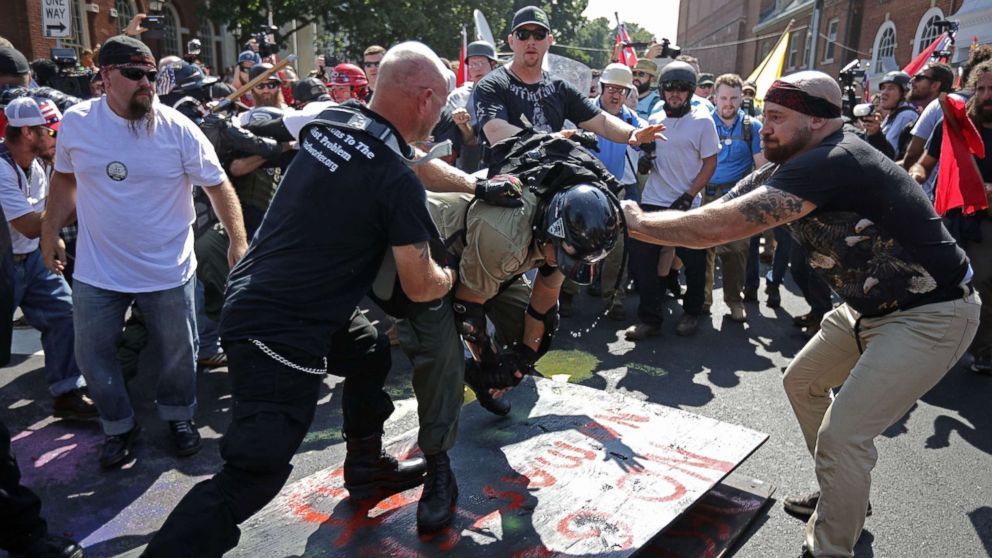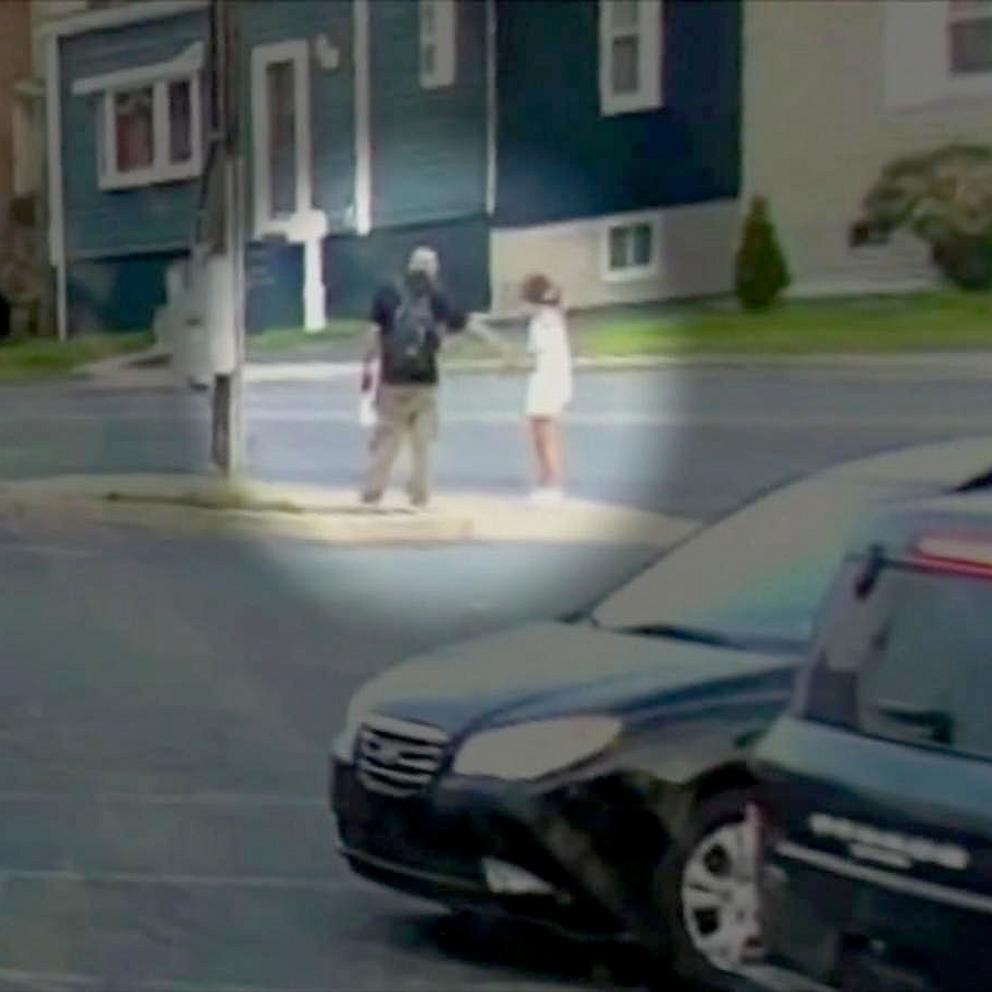What to know about the violent Charlottesville protests and anniversary rallies
Images of neo-Nazis marching in the streets and violent clashes between alt-right protesters and counterprotesters in Charlottesville last year are still fresh in many residents' minds.
On Aug. 12, 2017, a "Unite the Right" rally in Charlottesville turned deadly when a 20-year-old Ohio man allegedly accelerated his car into a crowd of counter-protesters, killing 32-year-old Heather Heyer and leaving 19 others injured, five critically.
Now, some of the same right-wing groups involved in those events in Charlottesville are planning another protest to coincide with the anniversary this weekend. Virginia Gov. Ralph Northam and the city of Charlottesville declared states of emergency ahead of this weekend’s anniversary. The governor said in a press conference Wednesday he will allow agencies to call in the National Guard to assist in security efforts.
But larger protests are planned for Washington D.C. Here's what you need to know.
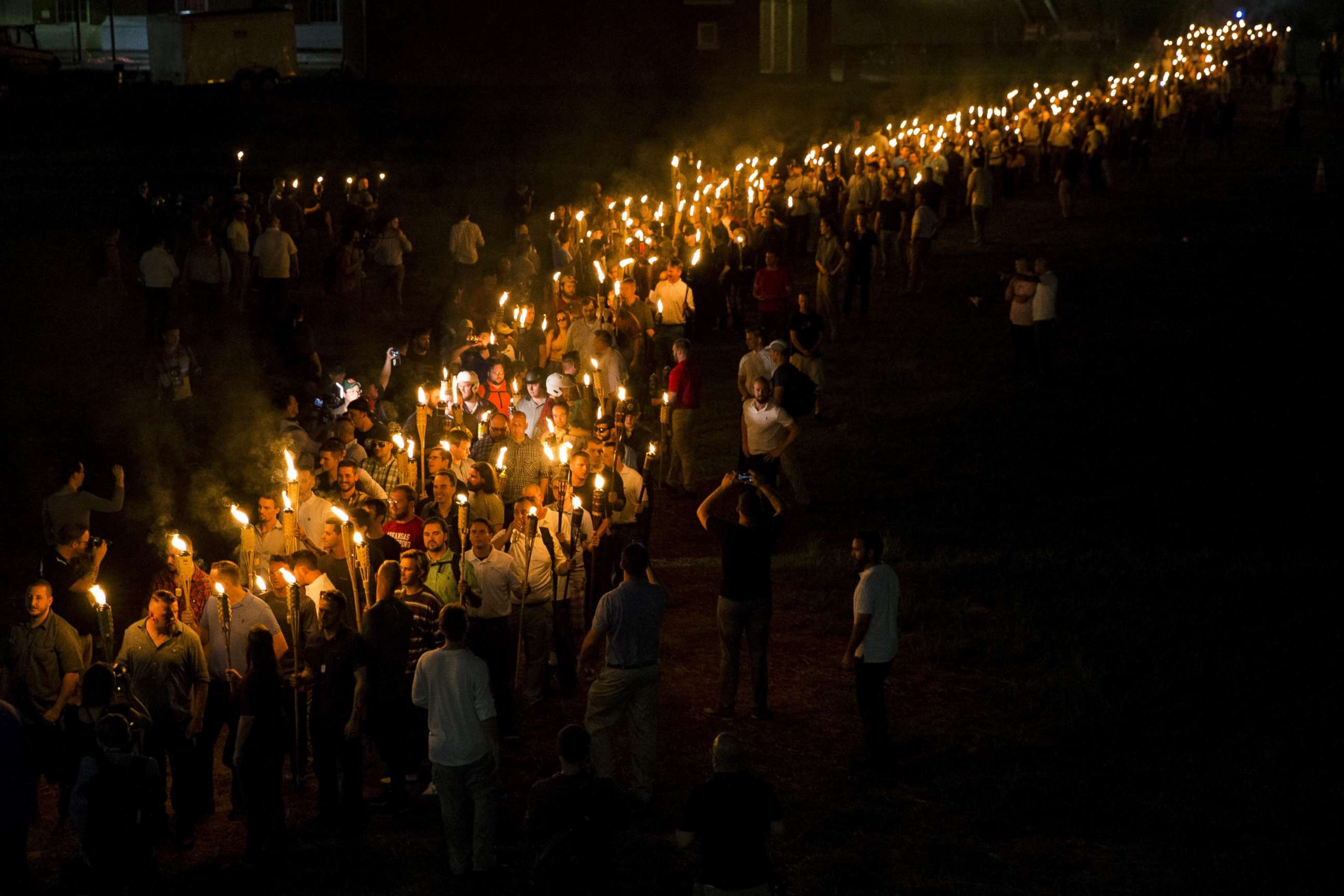
What happened last year?
Charlottesville, best known for being home to the state university created by Thomas Jefferson, may seem like an unusual choice for a heated battle involving neo-Nazis, but there was a reason that "Unite the Right" organizers chose the town for their rally.
Charlottesville had been in a months-long battle over what to do with a statue of Gen. Robert E. Lee, who led the Confederate army during the Civil War.
Many cities across the country have been grappling with what to do with their Confederate statues, as some feel that they are reminders of a dark time of racism in U.S. history and should be taken down.
Earlier in 2017, the Charlottesville City Council had voted to remove the Lee statue and rename the park where it is located.
A group of white nationalists protested the decision in May, prompting criticism from the mayor. But that protest paled in comparison to what unfolded in August.
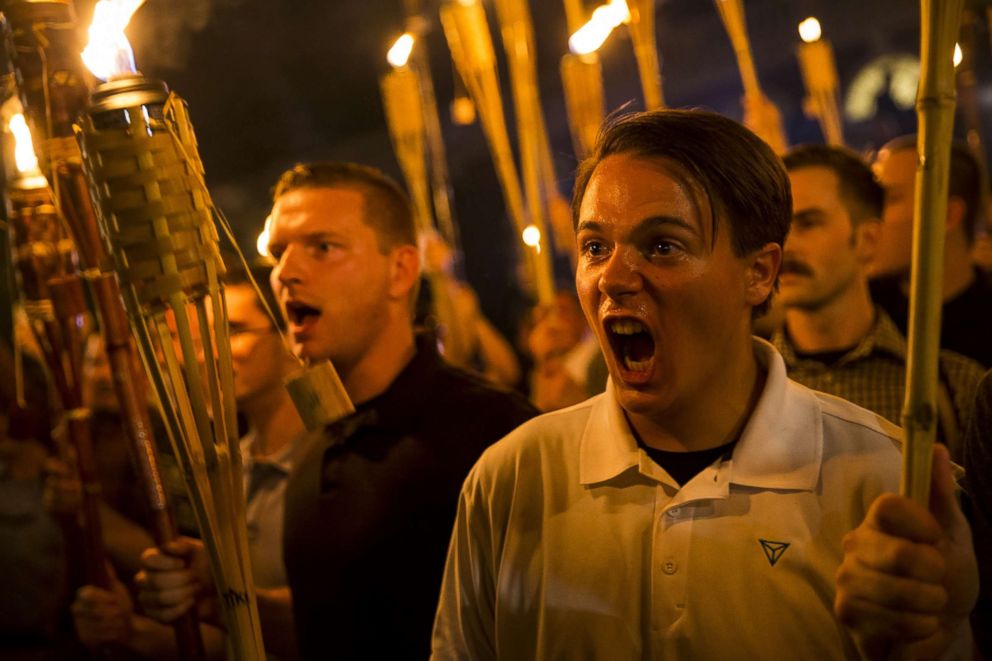
The "Unite the Right" rally was scheduled for Sat. Aug. 12 and participants started to gather in Charlottesville the night before.
A group of white nationalists holding lit tiki torches marched through the campus of the University of Virginia, some chanting the Nazi-associated phrase "blood and soil."
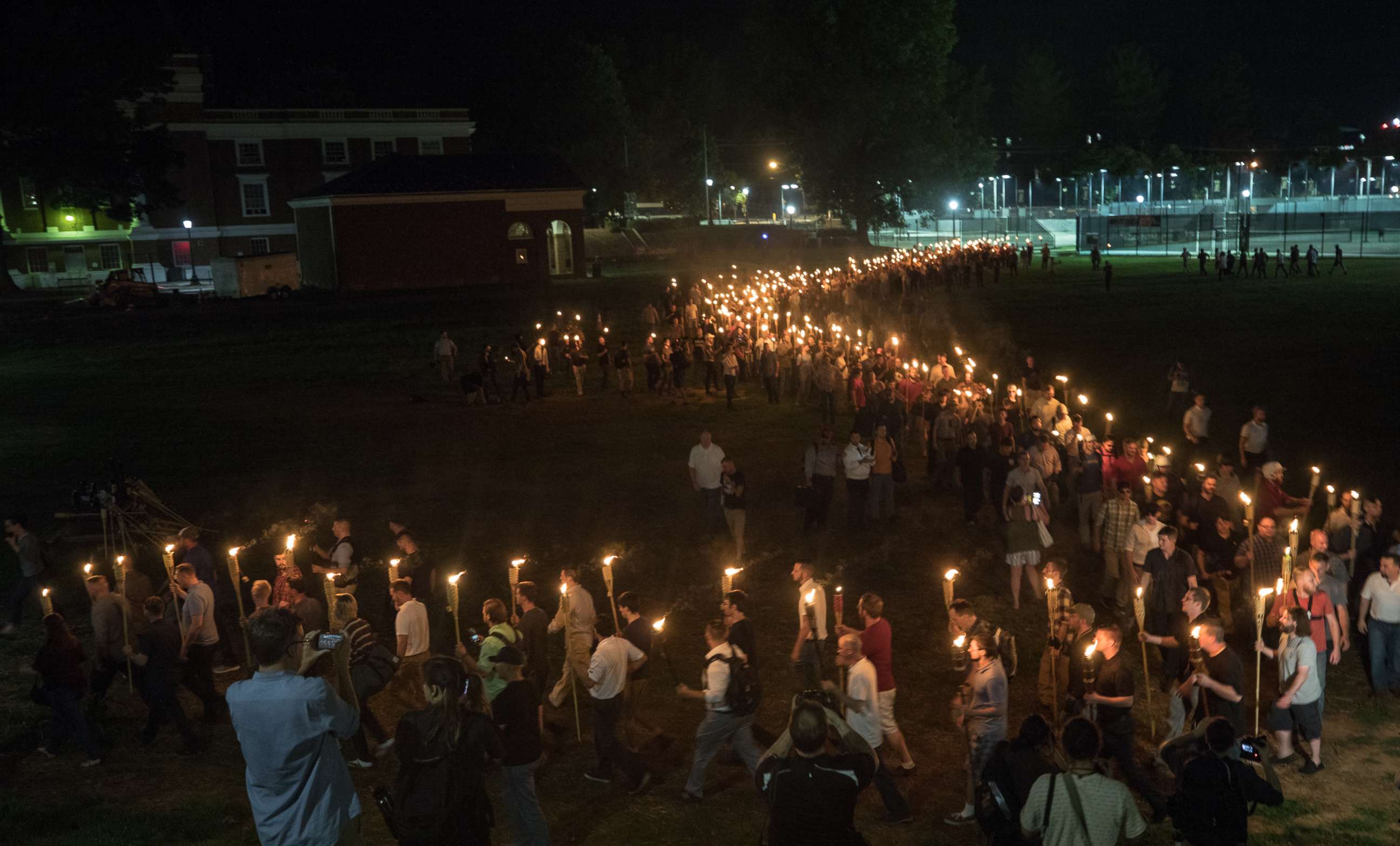
The formal rally was scheduled to start at noon Saturday but the first skirmishes of the day between protesters and counter-protesters were reported that morning.
Tensions soared and Virginia Gov. Terry McAuliffe declared a state of emergency before noon that day. The violence reached its peak at 1:42 p.m. when James Alex Fields rammed his car into a crowd of counterprotesters.
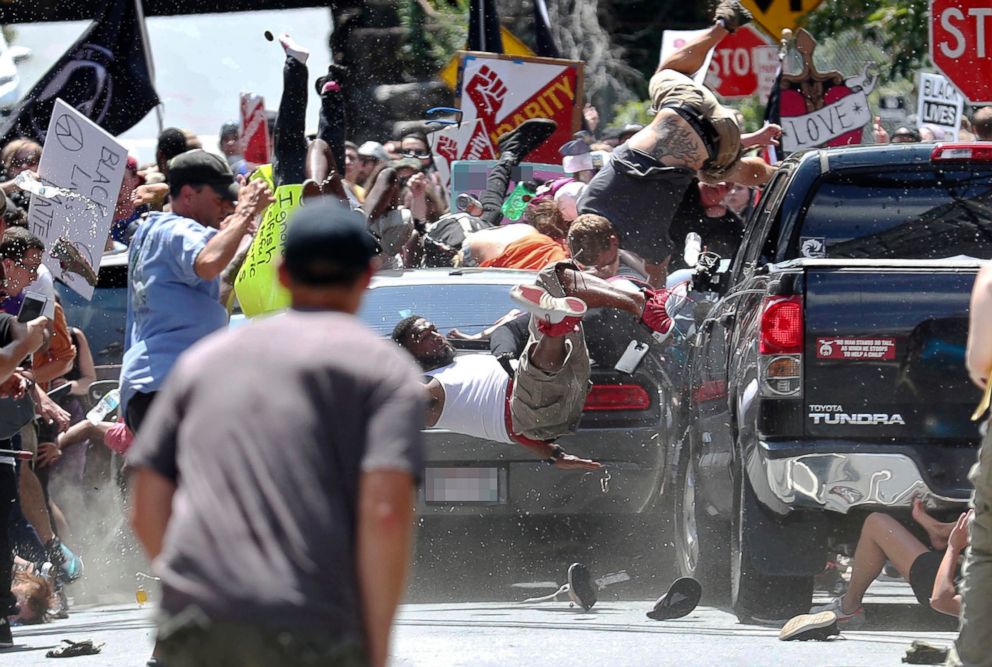
Heyer was killed and 19 others were injured.
Two Virginia State Police troopers were killed when their helicopter crashed outside of Charlottesville. The troopers, Lt. H. Jay Cullen and Trooper-Pilot Berke M.M. Bates, were lending air support in response to the violence in Charlottesville.
Trump's controversial response
President Donald Trump was spending time at his golf club in Bedminister, New Jersey, and released a statement condemning the violence but not calling out the white nationalist and neo-Nazi groups in attendance.
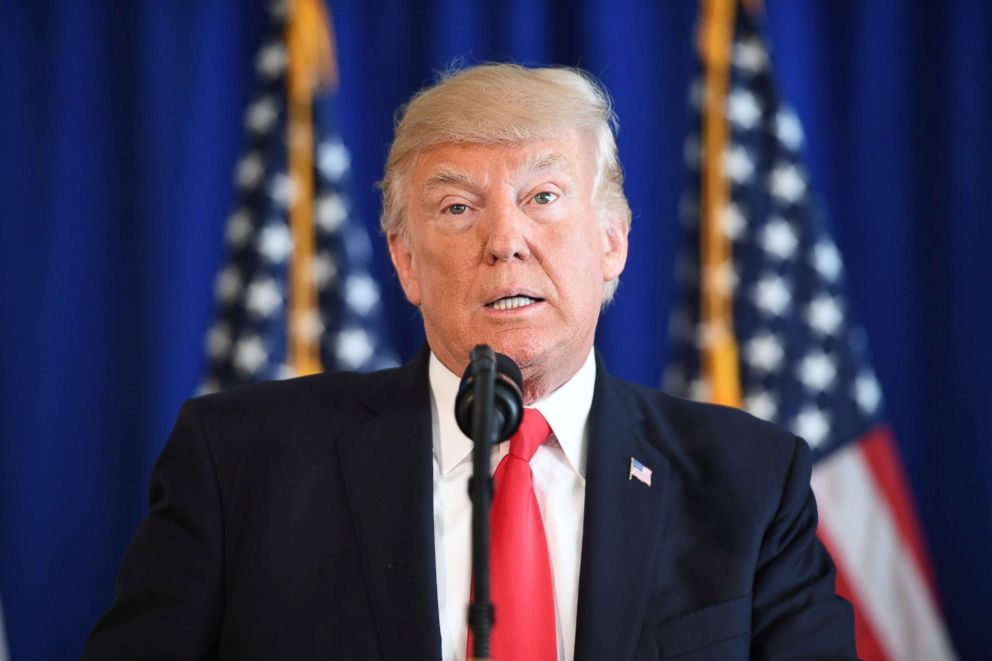
"We condemn in the strongest possible terms this egregious display of hatred, bigotry, and violence on many sides — on many sides," Trump said in a short statement delivered in New Jersey. "It's been going on for a long time in our country. Not Donald Trump. Not Barack Obama. It's been going on for a long, long time."
Trump tweeted twice more that afternoon, offering condolences to the families of Heyer and the troopers, but did not make any specific mention of the controversial groups.
On Aug. 13, a White House spokesperson who would not be publicly identified released a statement about Trump’s comments Saturday.
"The president said very strongly in his statement yesterday that he condemns all forms of violence, bigotry, and hatred, and of course that includes white supremacists, KKK, neo-Nazi and all extremist groups. He called for national unity and bringing all Americans together," the White House spokesperson said.
It wasn't until two days later, on Monday afternoon, that Trump made another televised statement, this time, being more explicit.
"Racism is evil. And those who cause violence in its name are criminals and thugs, including the KKK, neo-Nazis, white supremacists and other hate groups that are repugnant to everything we hold dear as Americans," he said.

"To anyone who acted criminally in this weekend's racist violence, you will be held fully accountable. Justice will be delivered," he added.
But Trump added more fuel to the fire on Tuesday, Aug. 15 during a televised press conference in which he lashed out at criticism of his initial statement.
Asked about his immediate response Saturday, Trump quickly went on to blame both sides for the conflict, adding that there were "very fine people" among both the white supremacists and the counter-protesters.
"I think there is blame on both sides. You look at both sides. I think there is blame on both sides," Trump said during his remarks on Aug. 15.
"You had some very bad people in that group. You also had some very fine people on both sides," he added.
What is expected to happen this weekend?
Groups from both sides of the conflict have planned public demonstrations on the anniversary of the Charlottesville clashes, but this time they're moving it to a bigger stage.
Permits for protests have been granted in different parts of Washington D.C., with the organizers of the original "Unite the Right" rally planning to march from a nearby Metro station to a demonstration in Lafayette Square Park, directly opposite the White House.
Multiple counter-demonstrations have also received permits, including groups like Black Lives Matter and an individual who plans to burn a Confederate flag in Lafayette Park.
More details about the demonstrations are expected to be released in the coming days.
